- | 10:00 am
These 3D-printed dirt walls grow a garden when you water them
A team of designers in Jerusalem wants to swap concrete and reinforcement steel for living walls entirely made of natural materials.

3D printing has come a long way in the past 20 years. Already, we can print bowls made of sawdust, electric motorcycles made of recycled plastic bottles, and houses made of concrete. But the next oddball material to make it into a 3D-printing machine is now soil.
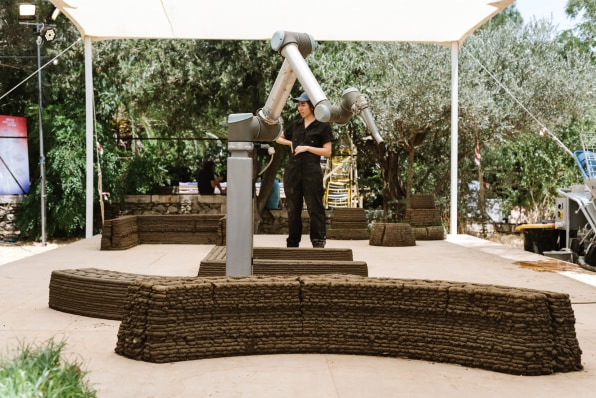
That’s exactly what happened last month when a team of designers unveiled To Grow A Building. Displayed as part of Jerusalem Design Week, the installation featured a dozen structures built using a custom-made robot specially designed to print with seeded soil. Six weeks later, with a little care, the plants have now developed a dense root system, and the walls have grown a lush green layer complete with edible radishes.
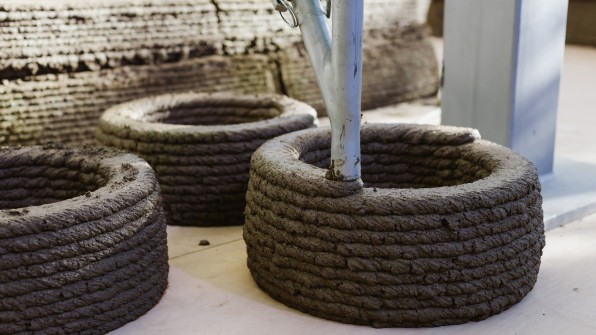
It may sound experimental, but the installation is rooted in very pragmatic concerns, namely that concrete and steel—two of the most commonly used building materials—are responsible for 22% of total global emissions. “We wanted to create architecture that is made out of totally organic and local materials that you don’t need to transport materials from the other side of the world,” says Nof Nathansohn, an architect and researcher who worked on this project with seven other designers.
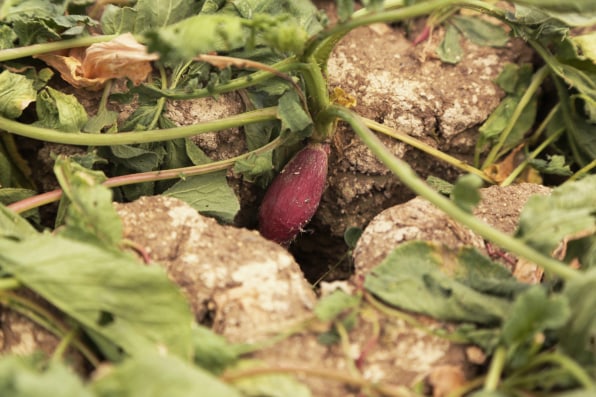
The problem is that existing technology didn’t allow building with such organic materials, and as Nathansohn says, “architects and designers are mostly limited to the machines that are out there.” You can shape bricks out of agave pulp, or cast walls made of compacted natural materials like earth or chalk, but these methods can be pretty limiting when it comes to complex geometric shapes like curved walls. They’re also labor intensive and often call for special construction skills.
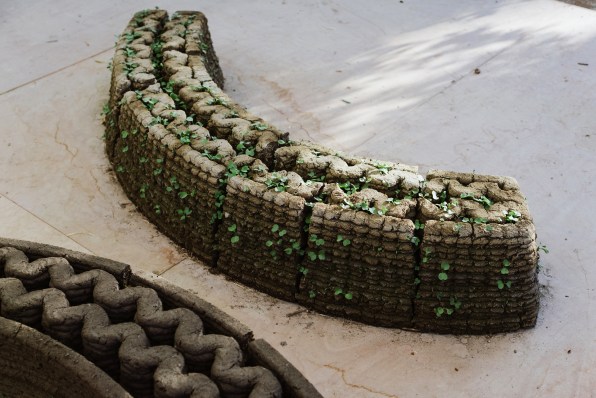
So, the team turned to 3D printing. This involved hacking an existing 3D printer, and building a custom pump and nozzle so it could hold the organic material, which is more liquid than concrete, and more textured because of the seeds. They started with wheat because it grows fast, then added local flora and vegetables. “We water it every day,” says Nathansohn.
Plucking radishes from the walls of your house has a certain appeal, but the grander vision here is for soil to replace concrete, and roots to replace reinforcement steel (though exactly how strong those roots could be remains unclear). “There is a lot of mathematical work on the fractals of plants and trees, so integrating the way different plants grow into the design process and the geometry of these walls can make the material stronger and more efficient,” she says.
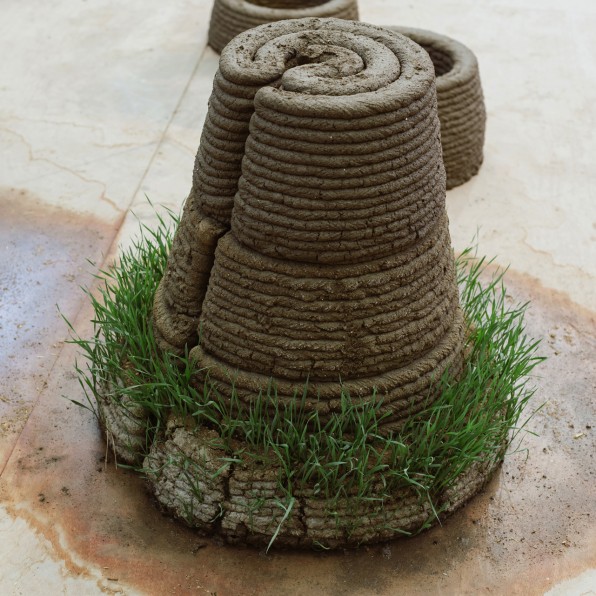
There are obvious challenges to this approach, like how tall you can build before the wall crumbles onto itself. At the design festival, the tallest structure was a 4.9-foot column, but for Nathansohn, it’s only a matter of finding the right geometry to support the material (like igloos, for example). “Next year, we could go higher and build an actual pavilion,” she says.




































